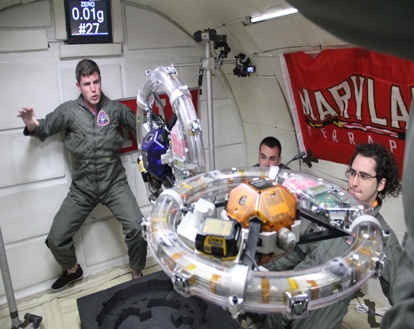
A new electromagnetic propulsion technology being tested on the International Space Station has the potential to extend the lifecycle of satellites and future spacecraft by providing a renewable power source.
Created by researchers from the University of Maryland’s Space Power and Propulsion Laboratory (SPPL), the Resonant Inductive Near-field Generation System (RINGS) uses a renewable, locally-generated electromagnetic power source to reposition spacecraft—an idea known as electromagnetic formation flight (EMFF). Satellites are often limited in the number of times they can be moved or repositioned in space due to the finite amount of onboard storage for propellants, and refueling can be costly. Use of the RINGS could help drastically extend the operating life of satellites and future space craft in orbit.
The RINGS project was tested earlier this year in a microgravity environment on NASA’s reduced gravity aircraft, and was transported to the International Space Station in early August for more extensive testing aboard the ISS.
“While reduced gravity flights can only provide short, 15-20 second tests at a time, the cumulative test time over the four-day campaign provided extremely valuable data that will allow us to really get the most from the test sessions that we’ll have on the International Space Station,” Ray Sedwick, associate professor of aerospace engineering at UMD and RINGS research team member, said.
In addition to EMFF, the RINGS project is also being used to test a second technology demonstrating wireless power transfer (WPT) that may offer a means to wirelessly transfer power between spacecraft.






